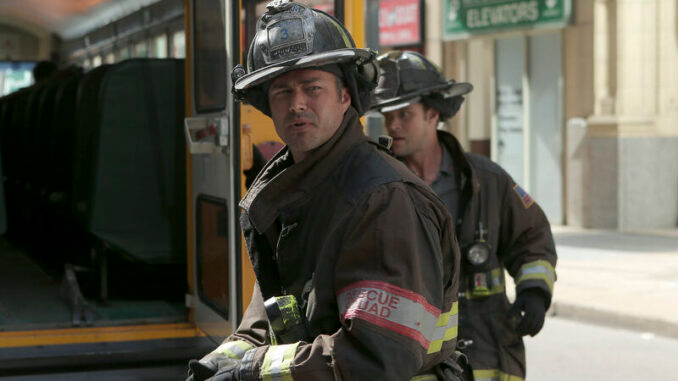
For more than a decade, Chicago Fire has delivered edge-of-your-seat rescues, emotional gut punches, and the kind of deep character connections that keep fans coming back season after season. But beyond the blaze, beneath the uniform, there’s another story smoldering quietly behind the scenes—one of real friendship, private struggles, and a cast that’s become a chosen family.
While Firehouse 51’s fictional crew tackles collapsing buildings and emotional trauma, the actors who bring them to life have their own kind of heroism—formed not in fire, but through laughter, long hours, and the kind of mutual respect that’s impossible to fake.
More Than Chemistry: A Chosen Family Off-Camera
One of the most enduring questions fans ask is whether the on-screen chemistry among the Chicago Fire cast is real. The answer? It’s not just real—it runs deep. Cast and crew describe a bond born out of shared intensity: long shooting days, physically grueling scenes, and emotionally heavy scripts.
Jesse Spencer and Taylor Kinney, who’ve anchored the show from its earliest days, developed a morning ritual—an unspoken nod, a quiet inside joke—before stepping into the fire. Kara Killmer was known for leaving handwritten notes with goofy doodles in her castmates’ trailers, just to lift spirits on tough days. These aren’t publicity stunts. They’re private, everyday acts of support that make the emotional storytelling possible.
Training, Trust, and Total Commitment
While Chicago Fire makes rescues look thrilling, the reality is far more punishing—and the actors lean into it. Many insist on doing their own stunts when possible, not just for realism, but out of respect for the real firefighters and paramedics who serve as technical advisors.
Monica Raymund, during her years as Gabby Dawson, pushed herself relentlessly to bring authenticity to every scene. Her dedication went beyond the script—she spent hours learning paramedic protocols and practicing firehouse drills. The entire cast undergoes fire training regularly, not just as preparation, but as part of their ongoing respect for the profession they’re portraying.
And that respect flows both ways. Firefighters and first responders often share their real-life experiences with the cast, shaping storylines and grounding the drama in reality. After some of the show’s most intense rescue scenes, it’s not unusual for the crew to take a quiet moment to reflect—a silent tribute to the real stakes faced by their real-world counterparts.
When the Cameras Cut, the Laughter Starts
But it’s not all intensity on set. In fact, it’s often the laughter behind the scenes that keeps the show going strong. Christian Stolte (Mouch) is the resident prankster, famous for his dry humor and perfectly timed one-liners that derail scenes and crack up the cast. Joe Minoso (Cruz) brings the dance party—literally. His impromptu dance battles with unsuspecting crew members have become legendary.
One of the most talked-about pranks involved a fake emergency call broadcast across the set’s comm system—something about an “escaped llama on the lot.” New crew members scrambled in confusion until the entire cast broke into hysterics. These are the moments that never make it into blooper reels, but they’re what make the long days manageable—and memorable.
Real Emotions in a Fictional World
More than anything, what makes Chicago Fire different is how deeply its themes resonate with the people who bring it to life. The storylines about loss, sacrifice, and resilience often mirror the actors’ own life experiences. Off-camera, cast members open up to each other about their families, their fears, and the way certain episodes hit a little too close to home.
When a character is grieving, the support between cast members is genuine. They aren’t just scene partners—they’re emotional anchors for one another. This unspoken support system has carried the show through personal cast challenges, unexpected exits, and even off-screen tragedies.
The Real Secret to Chicago Fire’s Longevity
In a television landscape littered with reboots and revolving casts, Chicago Fire endures—not just because of its explosive action or addictive storylines, but because of the heart beating behind the scenes. The show works because the people behind it believe in what they’re doing. They believe in each other.
So, while fans might tune in for the next daring rescue or heartbreaking goodbye, the real engine of Chicago Fire is something less visible: a cast and crew who’ve built something real behind the fiction. Something built on trust, humor, and a whole lot of heart.
And that, more than any fireball or cliffhanger, is the true secret of Firehouse 51.
